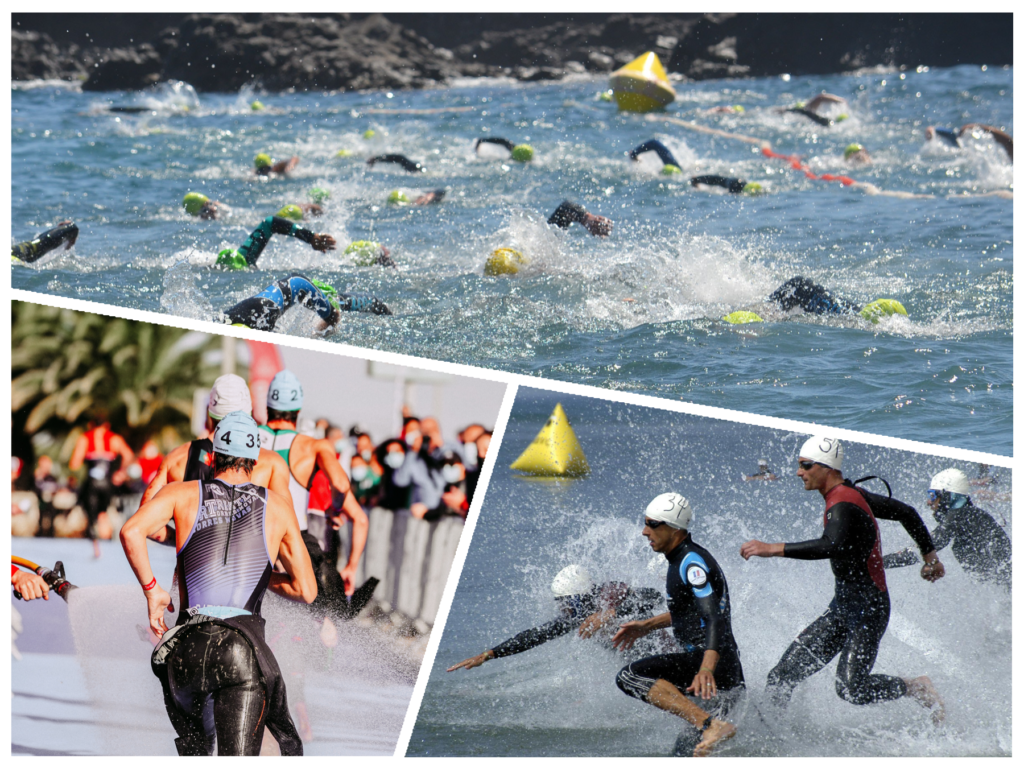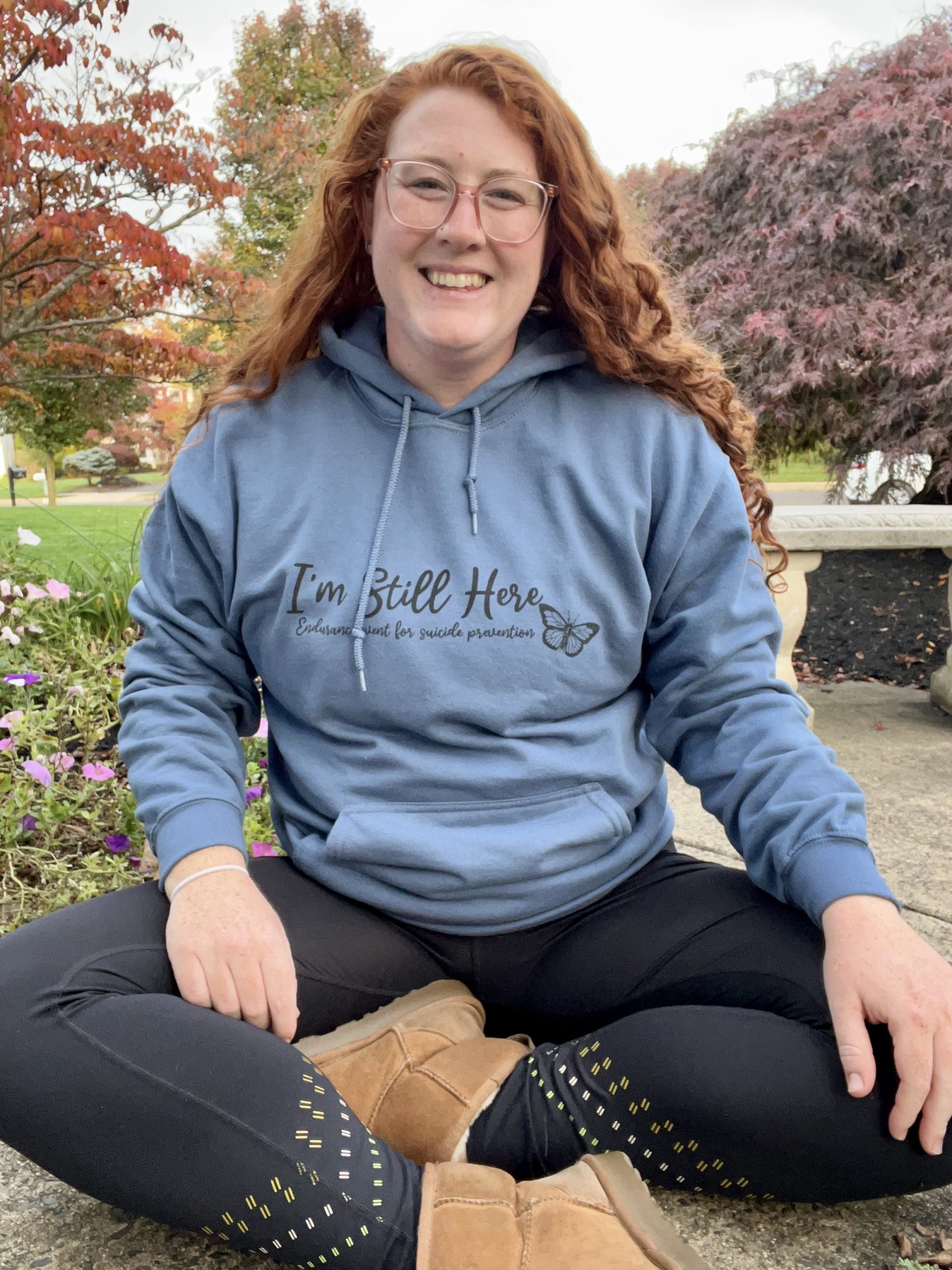What You’ll See On The Swim Course Of Your First Triathlon

What you’ll see on the swim course of your first triathlon that has an open water swim will include buoys, kayakers, start line and the swim exit. While the adage in triathlon is “you’ll never win the race on the swim,” you DO need to finish the swim with enough stamina to hop on the bike in order to even finish. Exposure to open water swimming is the most crucial part of preparing for the swim leg of a triathlon. I’m going to walk (swim? Float? kayak?) you through what you’ll see on the swim course and what each piece of equipment is meant for.
What Will I See On The Swim Course For My First Triathlon
STARTING LINE
The start line of a triathlon looks different for each race. At one race last year, everyone jumped in the water and started by pushing off a dock, but at a different race, you ran through an inflatable arch to enter the water. The race organizers will very clearly state in the athlete guide (your best friend for the race) where the race begins and how entry to the swim is managed, so reviewing this guide is mandatory for success in the swim. The athlete guide will also explain the next item you’ll see which are the:
BUOYS
When we’re training for swimming, a pull buoy (or just “buoy”) is the foam, hourglass-shaped equipment used to improve pull and body positioning. However, buoys in a race are much different and serve an entirely separate purpose! An open water buoy is generally inflatable, and has a rope attached to it with a weight at the bottom that keeps it from floating away. Buoys are mostly bright orange and have a large, stubby, cylinder shape. These are the most important part of the course as they direct you exactly where you need to go. This is the reason you learn to sight during your training. Most races will have you swim on the outside of the buoys. If the course is clockwise, swim to the left of them, and if the course is counterclockwise, swim to the right of them. However, this again is something crucial to glean from the athlete guide.
KAYAKS & KAYAKERS
These folks are here to help! Every triathlon with an open water swim should have kayakers paddling around the outskirts of the course. They’re there for multiple reasons:
- Safety: Open water swimming can lead to panic or health conditions like swimming induced pulmonary edema (SIPE) or asthma attacks. Similar to how a pool has lifeguards, it is the job of the kayakers to attend to swimmers who are struggling or if they just need something to lean on for a moment. Volunteers are trained to see the signs of a struggling swimmer, and often will be lifeguard certified.
- Keeping swimmers on course: While sighting is your first line of defense against going off course, the kayakers’ job is also to redirect swimmers who have gone a bit too far away from the buoys. As a seasoned swimmer, I still have this happen, and I’m very grateful to the folks in kayaks for getting me back on track!
SWIM EXIT/PATH TO T1
You did it! You’ve finished the swim, but what does that look like? This depends on the race, but in general there is some sort of exit path laid out. Some races will have a ramp and an inflatable arch. Others will have some signage and a roped off path for you to head to transition on. Check with the race organizers if you are allowed to leave a pair of shoes here. Some races allow it, while others do not. If it’s an ocean or bay swim, the path to T1 is often on sand. When heading out of fresh water, the exit can be either grass or pavement.
This guide should lay out a blueprint for what to expect at your first triathlon during the swim. Ff you have more questions, feel free to send me a message on Instagram at @danielle.trisandtbis. Have fun!

Danielle Moore is a swimmer and triathlete living outside Philadelphia, Pennsylvania. Her athletic journey picked up at 10 years old when she started swimming in the summers, and ended up as a butterflyer for both her high school and college teams. She ran track in middle and high school as well, but swimming is her true passion in sports. Danielle has also been teaching swim lessons since 2010 and received her US Masters Swimming Level 1 Coach certification in March 2022. She raced her first sprint triathlon in 2019 and has been hooked ever since- she will be racing her first half Ironman in September 2022.









